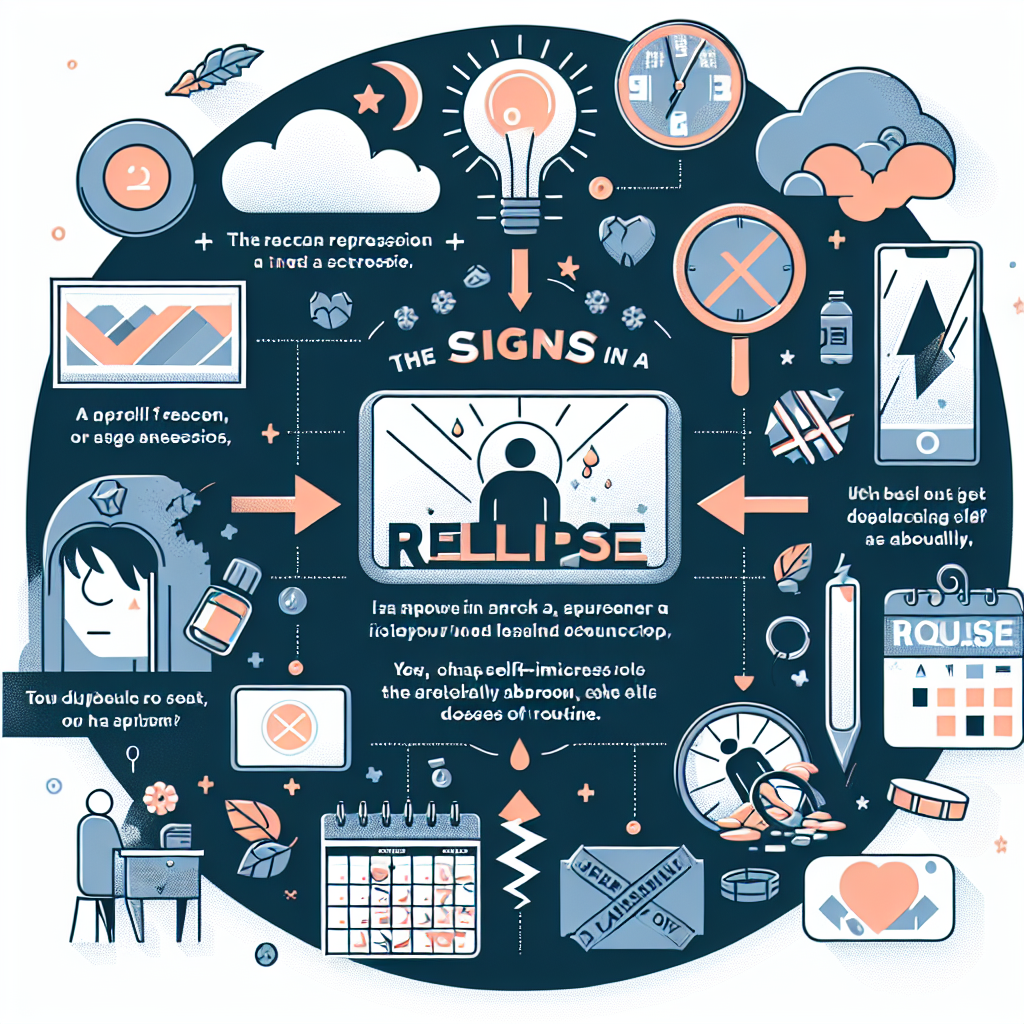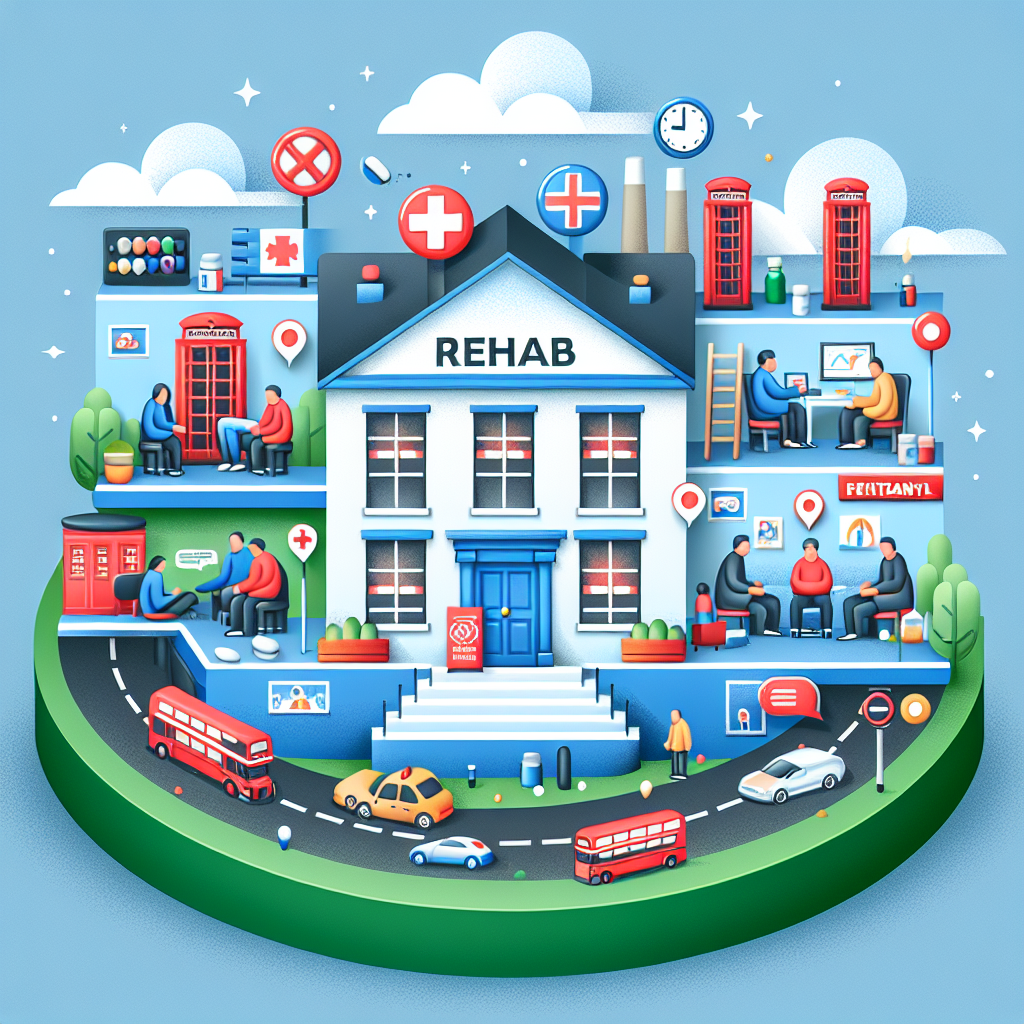-
Table of Contents
“Spot the Subtle Signals: Recognize Relapse in Your Loved One”
Introduction

Recognizing the signs of relapse in a loved one is crucial for providing timely support and intervention. Relapse, a return to substance use after a period of abstinence, can be a challenging and disheartening experience for both the individual and their loved ones. Understanding the warning signs can help in identifying potential issues early and taking appropriate steps to address them. Key indicators of relapse may include changes in behavior, mood swings, withdrawal from social activities, neglect of responsibilities, and physical symptoms such as changes in sleep patterns or appetite. By being vigilant and informed, you can play a vital role in helping your loved one navigate their recovery journey and seek the necessary help to prevent a full-blown relapse.
Identifying Behavioral Changes: Key Indicators of Relapse
Recognizing the signs of relapse in a loved one can be a challenging yet crucial task. It requires a keen eye for detail and a compassionate heart. Behavioral changes are often the first indicators that something may be amiss. By understanding these key indicators, you can offer timely support and potentially prevent a full-blown relapse.
One of the most telling signs of relapse is a noticeable shift in mood or attitude. Your loved one may become increasingly irritable, anxious, or depressed. These emotional changes can be subtle at first, manifesting as minor mood swings or a general sense of unease. Over time, however, they may escalate into more pronounced emotional instability. It’s essential to approach these changes with empathy, recognizing that they may be struggling internally.
In addition to mood changes, you might observe alterations in their daily routines. For instance, they may start neglecting responsibilities that they previously managed well, such as work, school, or household chores. This decline in responsibility can be a red flag, indicating that they are losing their grip on the structure that once helped them stay sober. Encouraging them to maintain their routines can be a gentle way to offer support without being confrontational.
Another key indicator is social withdrawal. If your loved one begins to isolate themselves, avoiding friends and family, it could be a sign that they are struggling. Social isolation often serves as a coping mechanism, allowing them to hide their struggles from those who care about them. In such cases, reaching out and offering a listening ear can make a significant difference. Let them know that they are not alone and that you are there to support them through their challenges.
Changes in physical appearance can also be a telling sign. You might notice that they are neglecting their personal hygiene or experiencing sudden weight fluctuations. These physical changes often accompany emotional and psychological struggles, serving as outward manifestations of internal turmoil. While it can be difficult to address these issues directly, expressing your concern for their well-being can open the door to a more in-depth conversation about what they are going through.
Financial instability is another potential indicator of relapse. If your loved one starts experiencing unexplained financial difficulties, it could be a sign that they are spending money on substances. This can be particularly challenging to identify, as financial issues can arise from various sources. However, if this change coincides with other behavioral indicators, it may warrant a closer look.
It’s also important to pay attention to their communication patterns. If they become increasingly secretive or defensive, it could be a sign that they are hiding something. Open and honest communication is a cornerstone of recovery, and a shift away from this can be a red flag. Encouraging open dialogue and creating a safe space for them to share their feelings can help them feel supported and less isolated.
Recognizing these behavioral changes is the first step in offering meaningful support to your loved one. It’s essential to approach the situation with compassion and understanding, rather than judgment. Relapse is often a part of the recovery journey, and your support can make a significant difference in helping them get back on track. By staying vigilant and offering a loving, supportive presence, you can help your loved one navigate the challenges of relapse and continue on their path to recovery.
Emotional Red Flags: Recognizing Mood Swings and Anxiety
Recognizing the signs of relapse in a loved one can be a challenging and emotional journey, but it is a crucial step in providing the support they need. One of the most telling indicators of a potential relapse is the presence of emotional red flags, particularly mood swings and anxiety. Understanding these signs can empower you to take timely action and offer the necessary encouragement and assistance.
Mood swings are often one of the first emotional red flags to appear. These abrupt changes in emotional state can range from extreme happiness to deep sadness, often without any apparent reason. For instance, your loved one might seem euphoric and full of energy one moment, only to become irritable and withdrawn the next. Such fluctuations can be confusing and distressing, both for the individual experiencing them and for those around them. It is essential to approach these mood swings with empathy and patience, recognizing that they may be indicative of deeper struggles.
In addition to mood swings, heightened anxiety is another significant emotional red flag. Anxiety can manifest in various ways, including restlessness, excessive worry, and physical symptoms such as sweating or a racing heart. Your loved one might express concerns about situations that previously did not bother them or exhibit an overwhelming sense of dread. This heightened state of anxiety can be particularly challenging to manage, as it often feeds into a cycle of negative thoughts and behaviors that can precipitate a relapse.
To effectively recognize these emotional red flags, it is important to maintain open lines of communication with your loved one. Encourage them to share their feelings and experiences, and listen without judgment. By creating a safe and supportive environment, you can help them feel more comfortable discussing their struggles, which can be a critical step in preventing a relapse. Additionally, paying attention to changes in their behavior and routines can provide valuable insights. For example, if they begin to isolate themselves, neglect responsibilities, or lose interest in activities they once enjoyed, these could be signs that they are struggling emotionally.
While recognizing these signs is crucial, it is equally important to approach the situation with compassion and understanding. Relapse is often accompanied by feelings of shame and guilt, which can exacerbate emotional distress. Offering reassurance and reminding your loved one that relapse is a part of the recovery journey can help alleviate some of these negative emotions. Emphasize that seeking help is a sign of strength, not weakness, and that you are there to support them every step of the way.
Moreover, encouraging your loved one to engage in healthy coping mechanisms can make a significant difference. Activities such as exercise, mindfulness practices, and creative outlets can help manage mood swings and anxiety. Professional support, such as therapy or support groups, can also provide valuable tools and resources for navigating these emotional challenges.
In conclusion, recognizing the emotional red flags of mood swings and anxiety in a loved one is a vital aspect of supporting their recovery journey. By staying attuned to these signs, maintaining open communication, and approaching the situation with empathy and compassion, you can play a pivotal role in helping them navigate the complexities of relapse. Remember, your support and understanding can make a profound difference in their path to healing and resilience.
Physical Symptoms: Spotting the Physical Signs of Relapse
Recognizing the signs of relapse in a loved one can be a challenging yet crucial task. Physical symptoms often serve as the first indicators that something may be amiss. By understanding these signs, you can offer timely support and potentially prevent a full-blown relapse. One of the most noticeable physical symptoms is a change in appearance. This can manifest as sudden weight loss or gain, poor hygiene, or a general neglect of personal grooming. These changes often occur because the individual may be prioritizing substance use over self-care, leading to a visible decline in their physical state.
Another significant physical symptom to watch for is changes in sleep patterns. Your loved one may start experiencing insomnia, staying up all night, or conversely, they may begin sleeping excessively. These disruptions in sleep can be a direct result of substance use or withdrawal, and they often contribute to a cycle of fatigue and irritability. Additionally, you might notice changes in their energy levels. They may appear unusually lethargic or, on the flip side, excessively energetic and restless. These fluctuations can be indicative of substance use, as different substances have varying effects on the body’s energy levels.
Furthermore, physical symptoms can also include changes in appetite. Your loved one may start eating significantly more or less than usual. This can lead to noticeable weight changes and can be a sign that they are using substances to cope with stress or emotional pain. Alongside these changes, you might observe physical signs such as bloodshot eyes, dilated or constricted pupils, and frequent nosebleeds. These symptoms can be directly linked to substance use and should not be ignored.
In addition to these more obvious signs, there are subtler physical symptoms that can indicate a relapse. For instance, you might notice your loved one frequently complaining of headaches, stomachaches, or other unexplained physical ailments. These complaints can sometimes be a way for them to mask their substance use or to seek out medications that can be misused. Moreover, you might observe them becoming more accident-prone or having unexplained injuries. This can be a result of impaired coordination and judgment due to substance use.
It is also important to pay attention to their overall physical health. Frequent illnesses, a weakened immune system, and a general decline in health can all be signs that your loved one is struggling with substance use. These physical symptoms can often be accompanied by behavioral changes, such as increased secrecy, withdrawal from social activities, and a decline in performance at work or school. By being vigilant and recognizing these physical signs, you can take proactive steps to support your loved one.
While spotting these physical symptoms is crucial, it is equally important to approach the situation with empathy and understanding. Confronting your loved one with accusations can lead to defensiveness and denial. Instead, express your concerns in a compassionate manner, emphasizing your love and support. Encourage them to seek professional help and offer to assist them in finding the resources they need. By being a source of support and understanding, you can help your loved one navigate this challenging time and work towards recovery. Remember, recognizing the signs of relapse is the first step in helping your loved one reclaim their health and well-being.
Communication Breakdown: Understanding Withdrawal and Isolation
Recognizing the signs of relapse in a loved one can be a challenging and emotional journey, but understanding the nuances of communication breakdown, withdrawal, and isolation can provide crucial insights. When someone begins to relapse, one of the first indicators is often a shift in their communication patterns. They may become less responsive, avoid conversations, or exhibit a noticeable change in their tone and demeanor. This withdrawal from communication is not just a sign of relapse but also a cry for help, signaling that they are struggling internally.
As you observe these changes, it is essential to approach the situation with empathy and patience. Instead of confronting them aggressively, try to create a safe and non-judgmental space where they feel comfortable expressing their feelings. This can be achieved by using open-ended questions and active listening techniques. For instance, rather than asking, “Are you using again?” you might say, “I’ve noticed you’ve been quieter lately. Is there something on your mind?” This approach encourages them to open up without feeling attacked or cornered.
In addition to changes in communication, physical withdrawal and isolation are significant red flags. Your loved one may start to avoid social gatherings, family events, or even routine activities they once enjoyed. They might spend more time alone in their room or make excuses to stay away from home. This isolation can be a coping mechanism to hide their relapse or a way to avoid the guilt and shame associated with it. Recognizing this behavior is crucial because it allows you to intervene before the situation worsens.
To address this, gently encourage them to participate in social activities without being forceful. Suggest low-pressure outings or hobbies that they used to enjoy. Sometimes, the mere act of being around supportive friends and family can help them feel less isolated and more willing to seek help. However, it is important to respect their boundaries and not push too hard, as this can lead to further withdrawal.
Another aspect to consider is the emotional withdrawal that often accompanies relapse. Your loved one may seem distant, irritable, or unusually emotional. They might have mood swings or display signs of anxiety and depression. These emotional changes are often a reflection of their internal struggle and can be a precursor to more severe relapse behaviors. Offering emotional support during this time is vital. Let them know that you are there for them, no matter what, and that seeking help is a sign of strength, not weakness.
Moreover, it is beneficial to educate yourself about the nature of addiction and relapse. Understanding that relapse is often a part of the recovery process can help you approach the situation with more compassion and less frustration. This knowledge can also equip you with the tools to provide better support and recognize the signs earlier.
In conclusion, recognizing the signs of relapse in a loved one involves paying close attention to changes in communication, physical withdrawal, and emotional isolation. By approaching these signs with empathy, patience, and a willingness to support, you can help your loved one navigate this challenging time. Remember, your support can make a significant difference in their journey towards recovery, and by fostering open communication and understanding, you can inspire them to seek the help they need.
Q&A
1. **Question:** What are common behavioral signs that may indicate a loved one is relapsing?
**Answer:** Common behavioral signs include increased secrecy, withdrawal from social activities, neglecting responsibilities, and changes in daily routines.
2. **Question:** What emotional changes might suggest a loved one is experiencing a relapse?
**Answer:** Emotional changes can include mood swings, increased irritability, anxiety, depression, and defensiveness.
3. **Question:** How can physical health changes signal a potential relapse in a loved one?
**Answer:** Physical health changes may include sudden weight loss or gain, changes in sleep patterns, poor personal hygiene, and unexplained injuries or illnesses.
4. **Question:** What are some social indicators that a loved one might be relapsing?
**Answer:** Social indicators include associating with old friends who use substances, avoiding family and friends, and a decline in performance at work or school.
Conclusion
Recognizing the signs of relapse in a loved one involves being vigilant for changes in behavior, mood, and physical appearance. Key indicators include withdrawal from social activities, neglect of responsibilities, increased secrecy, and changes in sleep patterns or appetite. Emotional signs may include irritability, anxiety, or depression. Physical signs can range from poor hygiene to unexplained injuries. Additionally, a return to old habits, such as associating with past acquaintances linked to substance use, can be a red flag. Early detection through these signs can facilitate timely intervention and support.



